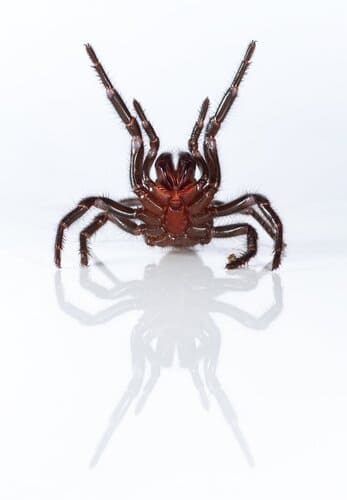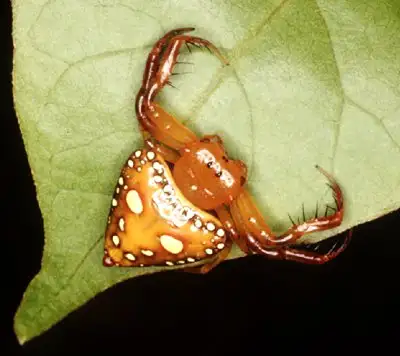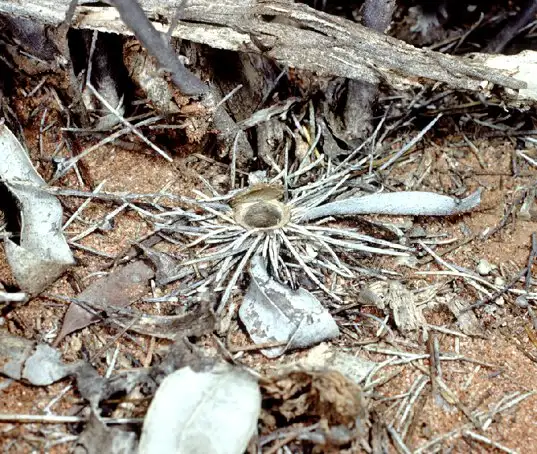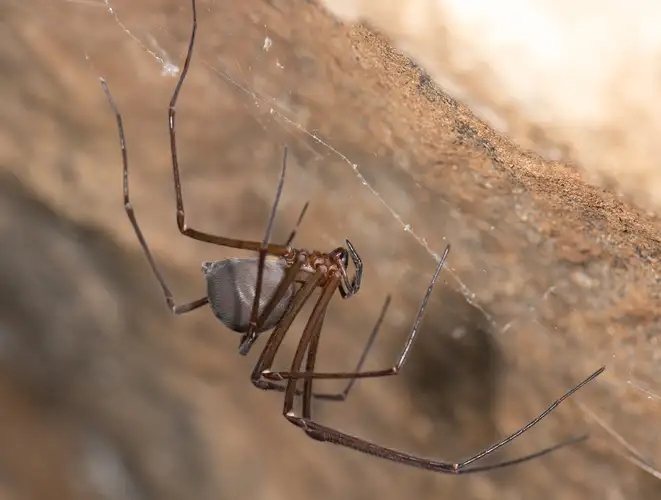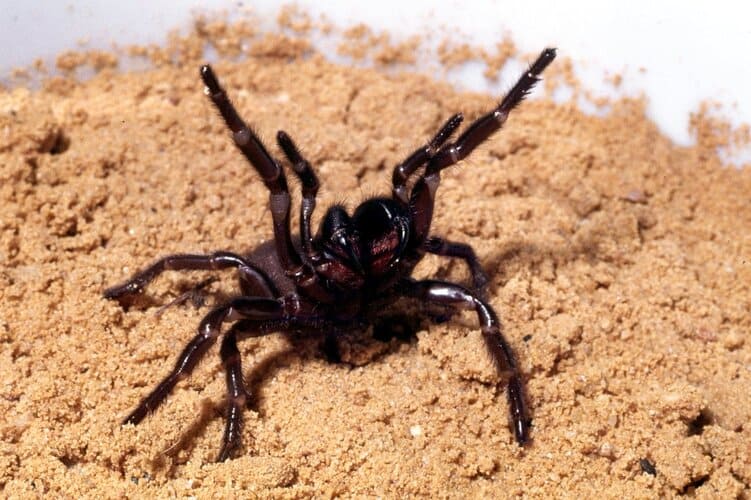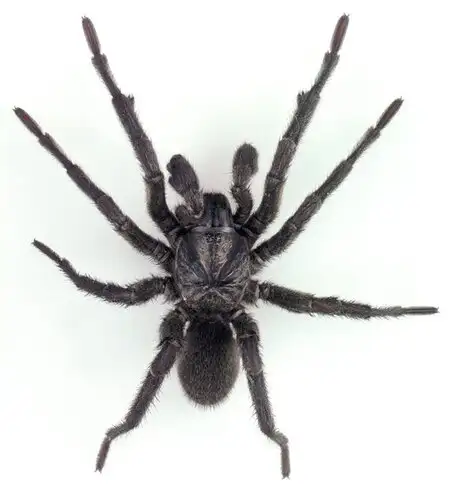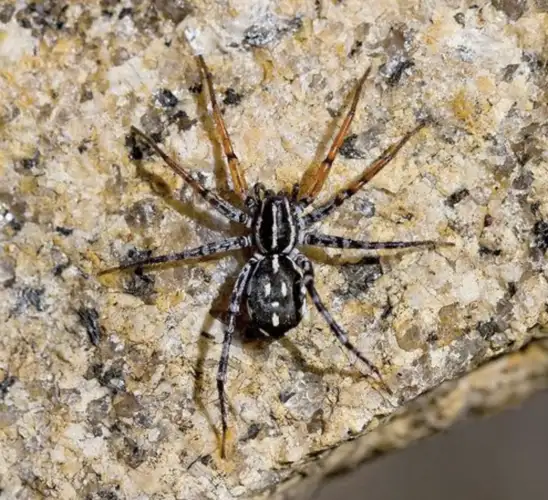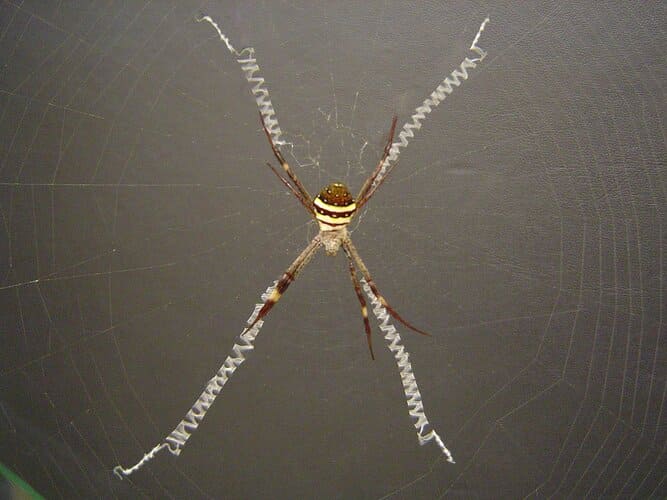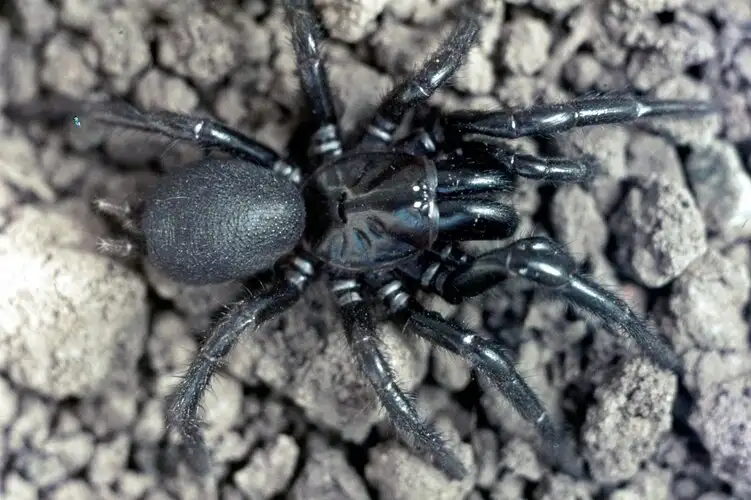Sydney Funnel-web Spider
IUCN
LCBasic Information
Scientific classification
- name:Sydney Funnel-web Spider
- Scientific Name:Atrax robustus O. P. Cambridge, 1877
- Outline:Arthropoda
- Family:Atracidae Atrax robustus
Vital signs
- length:Adult females about 30–35 millimetres, males about 15–25 millimetres in body length with relatively longer legs
- Weight:Medium sized mygalomorph spider with individual body mass up to a few grams depending on sex and age
- lifetime:Females may live for more than ten years in the same burrow; males have a much shorter life span after reaching maturity
Feature
Highly venomous Australian funnel web spider endemic to the Sydney region, building silk lined burrows with a simple funnel entrance and radiating trip lines used to detect prey.
Distribution and Habitat
Moist forests, gullies and suburban gardens with cool, humid microhabitats and diggable soil in the greater Sydney region of New South Wales, Australia.
Appearance
Glossy dark blue black to brown carapace and legs with a dull dark abdomen, strong fangs and finger like spinnerets; males more slender and long legged than females.
Details
The Sydney Funnel-web Spider is one of the best known highly venomous spiders in the world. Its scientific name is Atrax robustus, and it belongs to the family Atracidae. This species is native to the Sydney region of New South Wales in eastern Australia and is famous for its powerful venom and medical importance.
Taxonomy and Naming
Common name: Sydney Funnel-web Spider
Scientific name: Atrax robustus O. P. Cambridge, 1877
Family: Atracidae
Genus: Atrax
Appearance
The Sydney Funnel-web Spider is a medium to large mygalomorph with a glossy dark body:
Body size: adult females are about 30 to 35 millimetres in body length; males are smaller, around 15 to 25 millimetres, but have relatively longer legs;
Colouration: the carapace and legs are deep blue black to dark brown with a shiny, almost metallic sheen. The abdomen is a duller dark grey to black;
Body form: the carapace is smooth and shiny with strong chelicerae and large, powerful fangs that can be raised in a striking posture;
Spinnerets: finger like posterior spinnerets at the end of the abdomen are characteristic of funnel web spiders;
Sexual dimorphism: males are more slender and long legged, with well developed palpal organs. Bites from wandering males are responsible for most serious human envenomations.
Distribution and Habitat
The species is endemic to New South Wales, with a core range in the greater Sydney area, the Central Coast and parts of the Blue Mountains. It occurs in both natural bushland and modified suburban environments.
Typical habitats include:
Moist forests, rainforests and sheltered gullies;
Shaded slopes with deep leaf litter and abundant rocks or logs;
Suburban gardens, lawn edges, rockeries and areas under paving slabs and timber;
Retaining walls, drainage areas and other cool, damp microhabitats around houses.
The spiders prefer cool, humid sites with diggable soil that allow them to construct burrows and avoid desiccation during hot, dry weather.
Burrows and Funnel web Structure
Sydney funnel web spiders build silk lined burrows in soil or under logs and rocks. From the entrance they extend a short silk tube and a series of trip lines over the surrounding surface:
The burrow is usually vertical or slightly sloping and strengthened with silk along the walls;
The entrance is often surrounded by a curtain of dense silk that forms a simple funnel shape;
Trip lines radiate from the entrance across the ground or leaf litter and transmit vibrations from passing animals.
Females typically remain in the same burrow for many years. Mature males leave their burrows during the mating season and wander in search of females, which brings them into closer contact with people.
Behaviour and Diet
The Sydney Funnel-web Spider is a nocturnal ambush predator that hunts from its burrow entrance:
By day it stays inside the burrow to avoid heat and predators;
After dark it waits near the entrance with its front legs resting on the trip lines;
Prey includes beetles, cockroaches, millipedes, other spiders and sometimes small lizards or frogs;
When vibrations are detected, the spider rushes out, bites the prey and drags it back into the burrow to feed.
On warm, wet nights, wandering males may enter garages, shoes, swimming pools or houses, which increases the chance of encounters with humans.
Venom and Medical Importance
The Sydney Funnel-web Spider is renowned for its very potent venom. The venom contains peptide neurotoxins that act strongly on humans and other primates, affecting both the nervous and cardiovascular systems.
Symptoms of serious envenomation can include:
Intense local pain at the bite site with distinct fang marks;
Profuse sweating, salivation, nausea and vomiting;
Rapid pulse, breathing difficulty, muscle twitching and agitation;
In severe untreated cases, life threatening complications, especially in children.
Since 1981, a specific funnel web spider antivenom has been available in Australia. With prompt first aid and rapid hospital treatment, fatalities from Sydney funnel web bites have become extremely rare.
First Aid Advice
In areas where this spider occurs, any suspected bite should be treated as a medical emergency:
Keep the patient calm and as still as possible;
Apply a pressure immobilisation bandage to the bitten limb, following snakebite first aid guidelines;
Call emergency services and transport the patient to hospital as soon as possible;
If it can be done safely, capturing or photographing the spider can assist identification.
Ecological Role and Human Coexistence
In natural ecosystems, Sydney funnel web spiders are important predators of ground dwelling invertebrates and small vertebrates. At the same time, their medical significance means that people living in the region need to take precautions.
Reducing clutter in gardens, lifting shoes and toys off the ground, sealing gaps under doors and around foundations and being cautious when working around rocks and logs can greatly reduce the likelihood of contact with this species.
FAQ
Q1. Why is the Sydney Funnel-web Spider considered so dangerous?
Its venom contains potent neurotoxic peptides that are highly active in humans and other primates.
These toxins can rapidly affect the nervous and cardiovascular systems if a significant dose is delivered.
Q2. Are all bites from this species life threatening?
Not every bite results in severe envenomation. The outcome depends on how much venom is injected,
where the bite occurs and the age and health of the victim. However, because the potential risk is very high,
every suspected bite should be treated as an emergency.
Q3. How can people reduce the chance of encountering these spiders around homes?
Helpful measures include keeping yards tidy, removing piles of logs and debris, storing shoes and garden gloves off the ground,
and sealing cracks and gaps where spiders might enter buildings.
Q4. Do Sydney funnel web spiders play a useful role in nature?
Yes. They are significant predators of insects and other small animals, helping to regulate populations in forest and bushland habitats.
They are a natural part of the ecosystems of eastern New South Wales.

